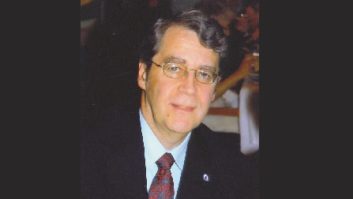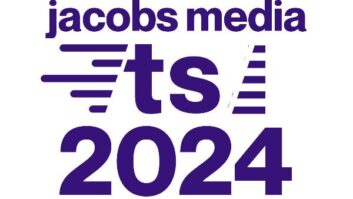Case Study: Installing multicast
Aug 1, 2005 12:00 PM, By Don Danko, CBRE CBNT
Broadcasters have sought the killer application for FM HD Radio, and at first glance it looked like program-service data (PSD) was going to be it. More recently, the attention has turned to supplemental audio.
Three years ago, National Public Radio spearheaded a project called Tomorrow Radio. This technology, now referred to as multicast, provides a second channel of audio that is transmitted with a station’s main program stream. The overall HD Radio data stream is set at 96kb/s. Streaming a second signal involves lowering the bit rate on the main channel and giving those saved bits to the second channel.
WGUC has tested its system with the main channel at 64kb/s and the second channel at 32kb/s. We also tested at 48kb/s for both channels. The main concern for any engineer is that when bit rates are lowered, more artifacts will be evident along with other audio quality issues. As an engineer of a classical music station I was concerned about our audio purist listeners. Lowering our main channel bit rate was a big concern.
After testing the main channel at 96, 64 and 48kb/s most of my fears and concerns vanished. The classical music proved to be more resilient than expected. It’s important to note that those tests happened almost five months ago, before any supplemental audio equipment was available. I did this so that when Harris shipped the supplemental audio equipment — a Flexstar — I could concentrate on the second channel. The one unresolved question is listener fatigue at lower bit rates. I feel confident with the quality of the 64, 48 and 32kb/s audio stream for a variety of music formats.
The Flexstar is simply a streaming audio encoder. We push the stream to our Dexstar exciter via a LAN connection through an E1 fiber optic Intraplex link. The Dexstar accepts the stream, merges it to the main HD Radio stream, and then sends it as one big data stream. The signal coverage is identical to the main HD Radio program signal.
Room for improvement
There are three important details to be identified. Unlike the main channel audio, when the second channel drops out because of a lack of signal strength there is no analog audio to switch to. This is simply a limitation of the system that can’t be improved on. The second issue is the lack of being able to switch bit rates or turn the second channel on and off at will without restarting the exciter. This issue is expected to be fixed in a future Ibiquity software release. The last issue deals with surround sound broadcasting. WGUC has been testing multiple surround technologies and has been involved with the NRSC subcommittee dealing with surround. When broadcasting surround it will be important to maintain the highest bit rate possible. Depending on the system used it will be necessary to use either 64kb/s or 96kb/s to broadcast surround on the HD Radio signal. This is where switching bit rates without restarting the exciter becomes an important issue.
Available multicast receivers are still limited. Kenwood, JVC and Panasonic have the only aftermarket automobile receivers available. Boston Acoustics, Polk Audio and Radiosophy are scheduled to ship tabletop receivers by fall. All of these receivers are now forward compatible and can decode second channel audio. Kenwood has offered to upgrade its older non-compatible HR-100 HD Radio receivers for a nominal fee.
On the Kenwood system, when users tune to a station that has a second channel the display will indicate the second channel by displaying a call sign then HD1 for the main signal and with a push of a button it will say HD2. When the second channel signal is lost the receiver will mute and wait for the signal to return or for the user to change the channel. Using the HD Radio receiver in my car I soon realized that a Clear Channel station in town was on the air with second channel audio. After further investigation I found that a handful of public radio stations nationwide along with some Clear Channel stations (and I’m sure other broadcasters) are implementing second channel audio. Now that encoders are shipping (at a price of around $5,500) I expect it to spread fast.
I believe that multicast audio may be the killer application needed to give HD Radio a boost and propel the technology. The next generation may provide even more channels. Currently, there are tests being conducted for three channels of audio each at 32kb/s.
PSD will be an important feature of HD Radio, but the availability of a viable second channel of programming is something that will have every station program director and sales manager salivating, and it will only provide the radio listener with more options and a better experience. It is precisely this kind of experience terrestrial broadcasting needs to secure listener loyalty and prevent them from signing up with satellite radio or listening to that six-disc CD changer mounted in their trunks.
Danko is VP of engineering and operations for WGUC-FM, Cincinnati.












